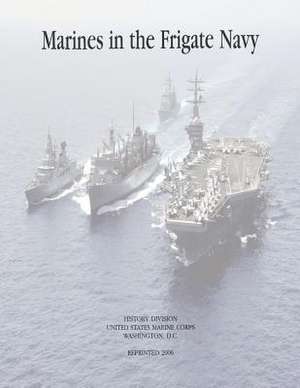Marines in the Frigate Navy
Autor Usmcr Colonel Charles H. Waterhouse, Charles R. Smith, Richard A. Longen Limba Engleză Paperback
Preț: 87.69 lei
Nou
Puncte Express: 132
Preț estimativ în valută:
16.78€ • 17.49$ • 13.97£
16.78€ • 17.49$ • 13.97£
Carte disponibilă
Livrare economică 16-30 decembrie
Preluare comenzi: 021 569.72.76
Specificații
ISBN-13: 9781500235857
ISBN-10: 1500235857
Pagini: 36
Dimensiuni: 216 x 279 x 2 mm
Greutate: 0.11 kg
Editura: CREATESPACE
ISBN-10: 1500235857
Pagini: 36
Dimensiuni: 216 x 279 x 2 mm
Greutate: 0.11 kg
Editura: CREATESPACE
